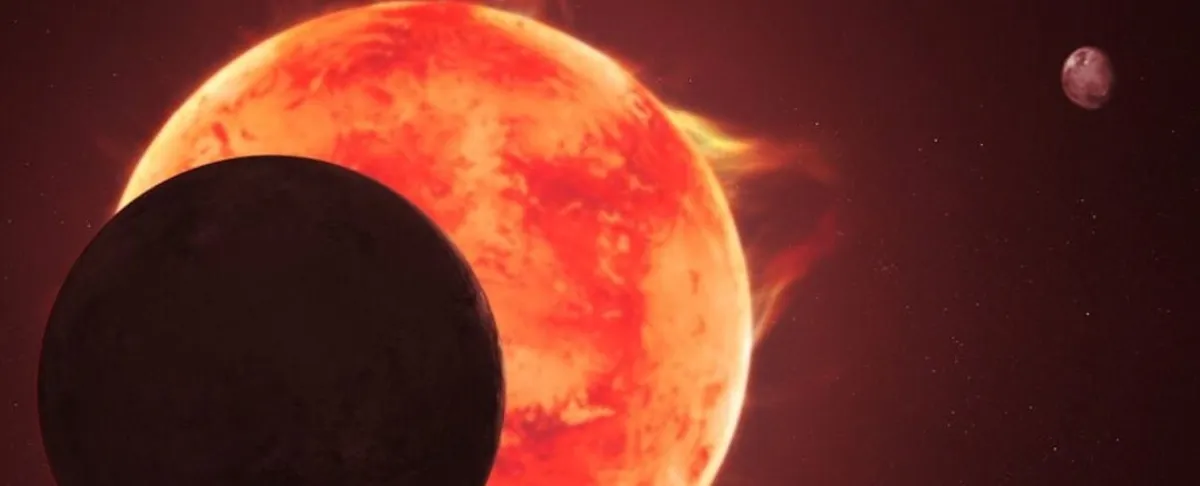
In times of global uncertainty, many ponder whether humanity possesses the resilience to endure. These reflections often lead to intriguing questions about other worlds, extraterrestrial life, and the possibility of intelligent species thriving in conditions far superior to our own. While these notions may seem fanciful, they are grounded in scientific inquiry, starting with the identification of habitable planets within the habitable zones of distant stars. Central to this search is the presence of liquid water and a life-friendly atmosphere capable of sustaining it.
The discovery of the TRAPPIST-1 system sparked immense excitement among astronomers and space enthusiasts alike. This remarkable system comprises seven Earth-like planets, with three or possibly four residing within the habitable zone of the red dwarf star. Notably, TRAPPIST-1 d was believed to potentially host surface water, raising hopes for its habitability. However, recent findings from the James Webb Space Telescope (JWST) reveal that TRAPPIST-1 d lacks an atmosphere similar to Earth's, casting doubt on its ability to sustain life.
In November 2022, the JWST conducted observations of TRAPPIST-1 d during two consecutive transits using its NIRSpec/PRISM instrument. Researchers from Canada, the UK, France, and the USA meticulously analyzed the data, concluding that this promising exoplanet does not possess an Earth-like atmosphere. The findings, published in The Astrophysical Journal, detail significant limitations on potential secondary atmospheres surrounding TRAPPIST-1 d, with lead author Caroline Piaulet-Ghorayeb highlighting the implications of these results.
While TRAPPIST-1 d may appear barren, the outer planets, including TRAPPIST-1 e, f, g, and h, might still harbor thick atmospheres. The research emphasizes the exceptional opportunity presented by the TRAPPIST-1 system, as it enables scientists to investigate secondary atmospheres on temperate rocky planets. The JWST's observations of TRAPPIST-1 d provided the first detailed transmission spectrum of the planet's atmosphere, revealing a flat spectrum devoid of detectable atmospheric features.
Understanding if environments akin to Earth's can exist elsewhere is pivotal for astrobiology. Although the JWST has opened new avenues for exploring atmospheres of Earth-sized planets, TRAPPIST-1 d has been ruled out as a candidate for an Earth twin or cousin. The lack of detectable molecules typically found in Earth's atmosphere, such as methane, carbon dioxide, and water, raises significant concerns regarding its habitability.
Despite the absence of evidence for an atmosphere, researchers propose several scenarios that could explain the findings. TRAPPIST-1 d might possess an extremely thin atmosphere akin to Mars, or perhaps thick, high-altitude clouds like those on Venus are obstructing our view of its atmospheric signatures. Alternatively, it may be a lifeless rock with no atmosphere whatsoever.
The study of TRAPPIST-1 d extends beyond mere habitability assessments; it contributes to a broader understanding of red dwarf stars, which are abundant in the Milky Way and known to host rocky planets. However, red dwarfs like TRAPPIST-1 are characterized by violent flaring events, occurring every few days, which could potentially strip away any planetary atmospheres, rendering the planets uninhabitable.
Despite the setbacks with TRAPPIST-1 d, hope remains for the outer planets in the system. Researchers believe that even if TRAPPIST-1 d has lost its atmosphere, planets TRAPPIST-1 e, f, and g might still retain water and other essential atmospheric components. The JWST's powerful instruments are poised to further investigate these colder, more distant planets, although they present unique challenges for detailed spectral analysis.
The research surrounding TRAPPIST-1 d demonstrates that it is unlikely to emerge as a habitable world, further underscoring the notion that Earth is indeed a unique gem in the cosmos. As we continue to explore the vast universe, the search for potentially habitable exoplanets remains an exciting scientific endeavor, offering hope that life may exist beyond our own planet.